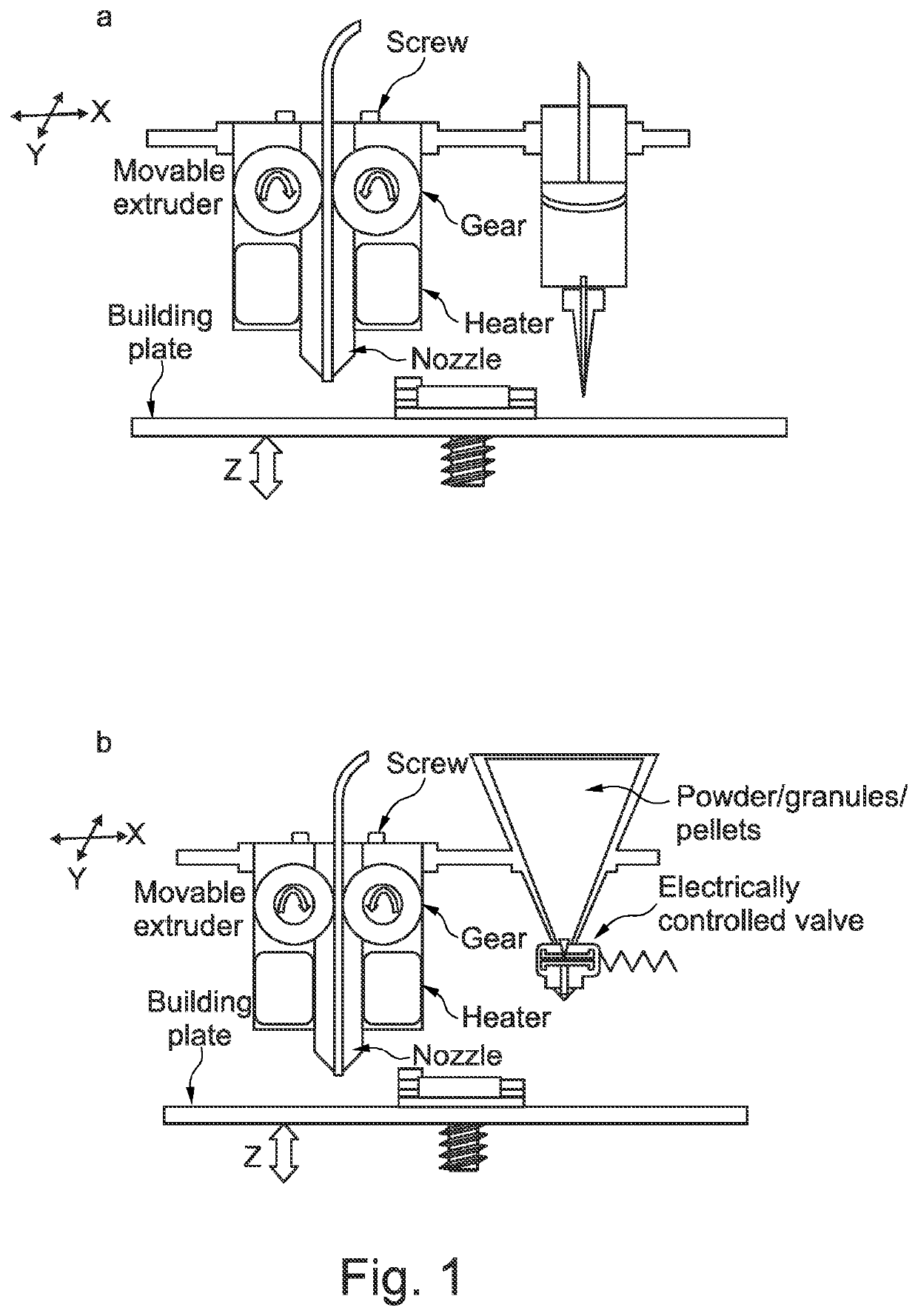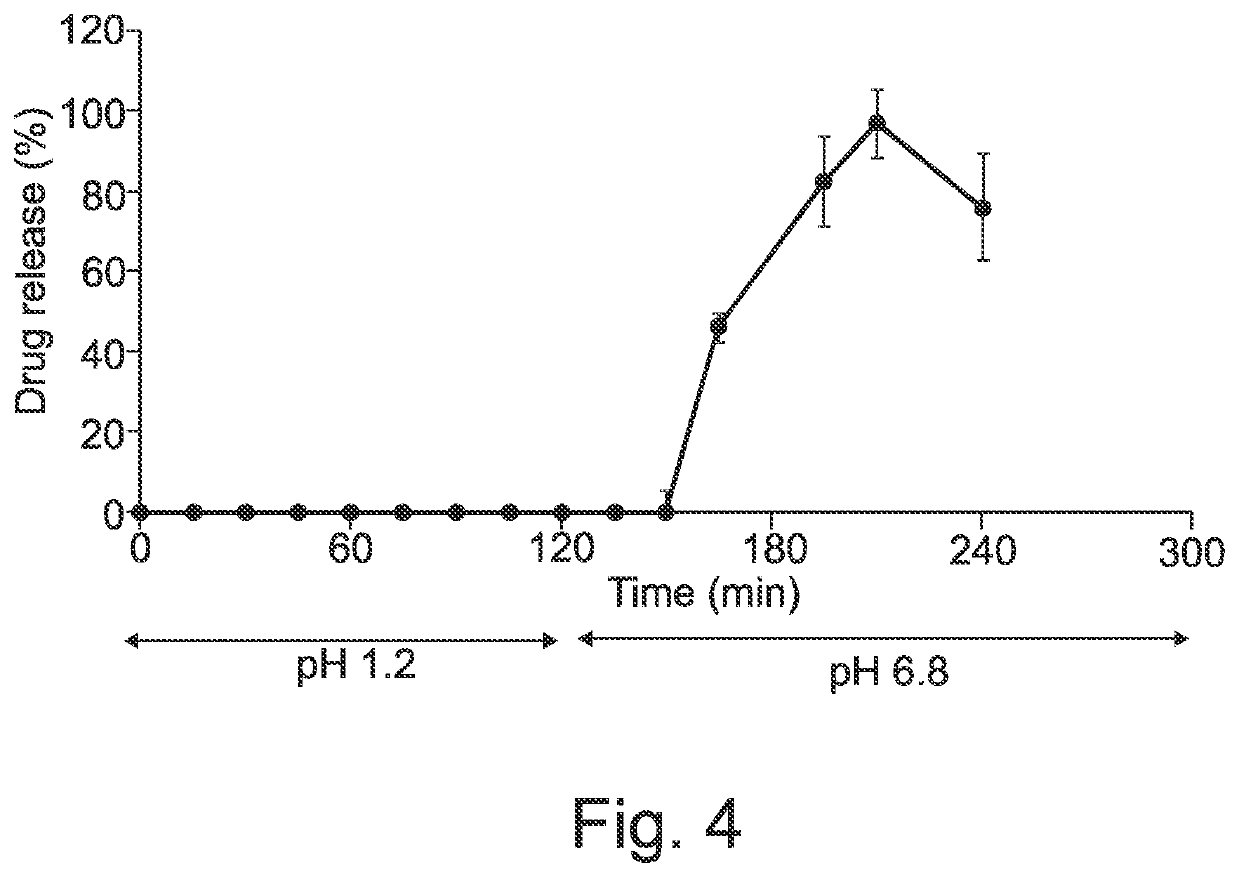Solid dosage form production
a technology of solid dosage form and production method, which is applied in the direction of additive manufacturing, application, household articles, etc., can solve the problems of large manufacturing facility with sophisticated equipment, adverse impact of manufacturing limitations on consumer choice and/or customisability of healthcare dosage form, and high cos
- Summary
- Abstract
- Description
- Claims
- Application Information
AI Technical Summary
Benefits of technology
Problems solved by technology
Method used
Image
Examples
example 1
on of Dipyridamole Solution (Core Composition)
[0325]A model drug, dipyridamole, was chosen to test the suitability of this system to provide immediate and extended drug release. Its fluoresce colour and ease of detection allows focusing on the development process. Initially dipyridamole solution with different solvent systems was optimised as shown in Table 1. It was decided that the drug solution PEG 400 (10 mg / ml) is the maximum concentration that can be readily prepared.
[0326]
TABLE 1optimization of highly concentrated dipyridamolesolution for liquid capsule feed.ConcentrationFormulation(mg / ml)ResultDipyridamole + water20Slightly solubleDipyridamole +20Slightly solubleethanol:water (20:80)Dipyridamole + Peg 40020Not complete dissolvedDipyridamole + Peg5Soluble400:EthanolDipyridamole + Peg 40010Soluble
example 2
on of the Shell Filament (Shell Composition)
[0327]In order to engineer the shell, a methacrylic polymer with enteric properties (pH threshold >5.5), was utilized. Eudragit L 100-55, TEC and talc was used in the ratio 50:16.66:33.33 respectively. A physical mixture was extruded using HME at 135° C. feeding temperature and 125° C. extruding temperature. The nozzle size was 1 mm to allow the expansion of the filament to approximately 1.65 mm after extrusion. Similar procedures for preparing suitable printing filaments are outlined in the Examples of WO2016 / 038356.
example 3
curacy of the Liquid Extruder
[0328]In order to assess the accuracy of the dosing the weight of dispensed solution following the order to fill a constant shape was assess in six replications (Table 2).
[0329]
TABLE 2reproducibility test for the liquid dispenser headExtrusionWeight of solution (g)speed(mm / s)(mm / s) 123456AverageSTDEV% SD200.07500.07290.07230.08300.12170.09730.08700.019422.3097
PUM
| Property | Measurement | Unit |
|---|---|---|
| temperature | aaaaa | aaaaa |
| temperature | aaaaa | aaaaa |
| temperature | aaaaa | aaaaa |
Abstract
Description
Claims
Application Information
 Login to View More
Login to View More - R&D
- Intellectual Property
- Life Sciences
- Materials
- Tech Scout
- Unparalleled Data Quality
- Higher Quality Content
- 60% Fewer Hallucinations
Browse by: Latest US Patents, China's latest patents, Technical Efficacy Thesaurus, Application Domain, Technology Topic, Popular Technical Reports.
© 2025 PatSnap. All rights reserved.Legal|Privacy policy|Modern Slavery Act Transparency Statement|Sitemap|About US| Contact US: help@patsnap.com



